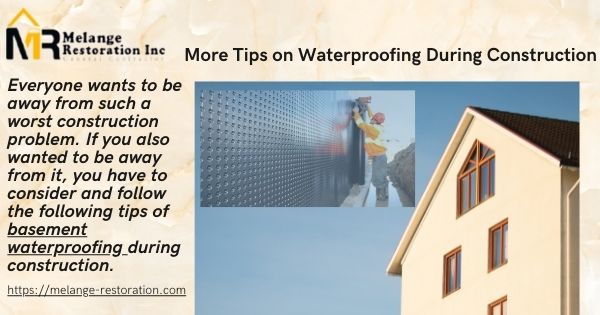Whether you want to construct your residential or commercial building, you will have to open the doors of your chest box in which you keep your years of savings.
Apart from the construction expenses, you will also need time and energy to keep your eyes on workers to make sure that the tasks are being done as required or not.
Basement waterproofing is a vital part of the construction. Even if your basement has never experienced a water increase, there’s always remains a chance that it will. That area of the building is horizontal to constant dampness and flooding.
Water can get in through cracks in the basement windows, base, or walls, causing problems such as damaged carpets or floor, musty odors, and shape.
Who wants to face problems like a wet basement, growth of yeast on exterior walls, and roof leakage, etc.?
No one!
Everyone wants to be away from such a worst construction problem. If you also wanted to be away from it, you have to consider and follow the following tips of basement waterproofing during construction.
In this blog, you will learn useful tips and tricks that you can adopt for waterproofing during constructions.
Tips for Basement Waterproofing
Although water damage recovery and basement repair should be hand over to waterproofing contractors, there are various waterproofing techniques the experts can use and control to stop basement flooding and decrease the risk that comes along with dampness.
Make use of these basement waterproofing tips to keep the area dehydrated and comfortable:
Pick Waterproof Carpeting Materials
A wrapped facade can dampen if your basement has water problems. Auspiciously, there are steps you can take to protect them from holes and standing water.
If you have discovered floors, a waterproof layer could be a wise choice if your basement has flooded previously or has mold and mold problems.
Apply Sealant to Walls and Floor for Basement Waterproofing
Cracks can, at times, be seen in concrete or cemented walls. These cracks permit water to leak in from the outside.
First of all, inspect the paint. If it is peeling, go over to inspect if there are any cracks under that are leasing the dampness in.
Before waterproofing the basement walls, clean and prep the surface to eliminate any dump. Apply a fine layer of waterproof sealant and let it dry completely before re-painting.
Keep Wood Surfaces and Water Separate
Dry decay can be found in damp areas that fix with wooden surfaces and structures, particularly floorboards and support beams. Consider separating the wood from the surface around the basement to reduce the danger of dry decay.
Use Dehumidifier
If your basement waterproofing work leads you toward mold and yeast cleaning, that is foul-smelling work. A dehumidifier component will be your rescuer. Dehumidifiers persuade dampness out of the air before it can destroy walls, paint, and fixtures.
Explore the Outdoor water damage problems
Even though style, paint peeling, and dry decay may show internally. External elements are numerous that lead to the problem.
For basement waterproofing, make sure to test drains and gutters for dribbles, which can cause water to stream toward the premises.
The compensation of waterproofing is more than just repairs and damage fixes, waterproofing can provide you with composure.
If you are having constant problems, there could be a range of reasons that are still out of your control.
Controlling these basement waterproofing problems takes professional tools and experience, so it is best to connect with professional for service or advice.
Melange Restoration Inc. is a licensed waterproofing contractor in NYC. Our team members have the proper certifications to take care of any job safely and thoroughly. As the well-known general contractor company in NYC, our goal is to get your home back to its pre-damage state, which helps to increase its resale value and appeal and allows you to move forward without hassle or worries. Explore our latest project updates and follow us on Facebook and Instagram.




